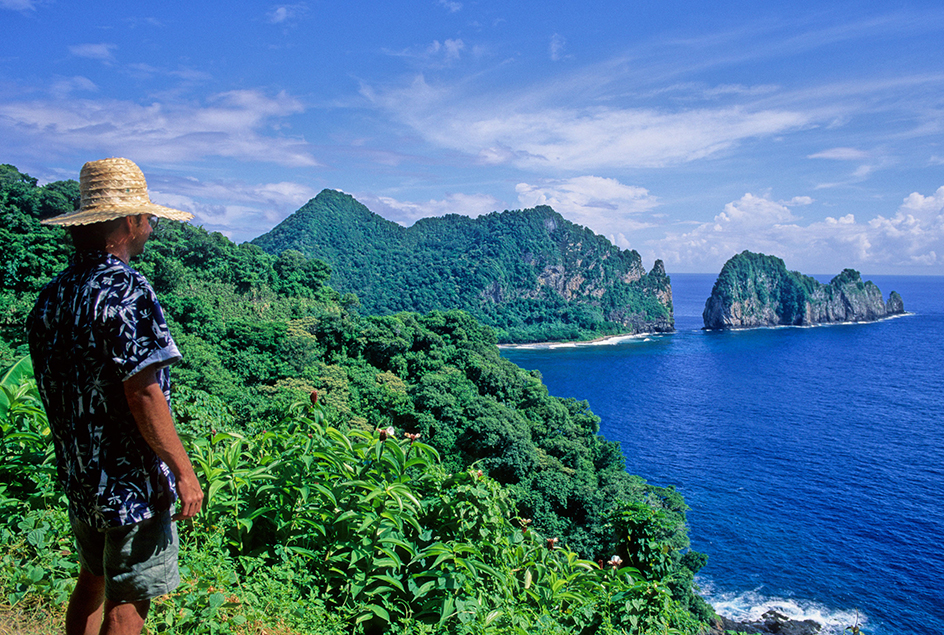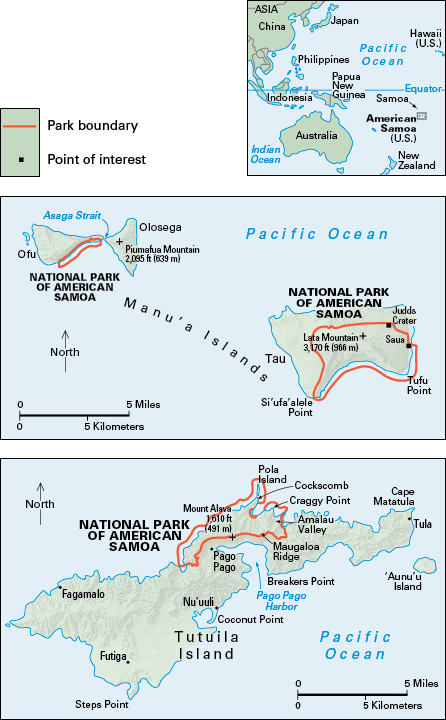American Samoa is a United States territory, about 2,300 miles (3,700 kilometers) southwest of Hawaii. Six of the territory’s seven islands are divided among three groups—Tutuila and Aunuu; Ofu, Olosega, and Tau (the Manua group); and Rose. These islands are in the Samoan chain. The seventh, Swains Island, lies 200 miles (320 kilometers) north. The Jennings family has owned Swains Island since 1856. That year, Eli Jennings, an American, and his Samoan wife settled there.
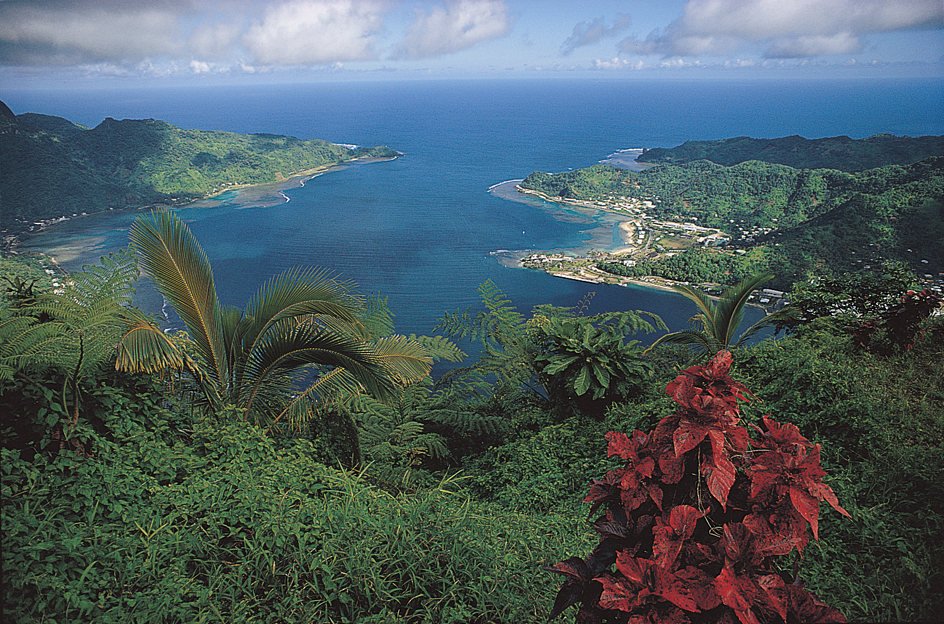
The largest and most important island is Tutuila. Pago Pago << PAHNG oh PAHNG oh >>, the capital of American Samoa, lies on Tutuila on one of the best and most beautiful harbors in the South Pacific. Pago Pago is the territory’s only port and urban center.
American Samoa’s 43,000 people are nationals, but not citizens, of the United States. As nationals, they do not vote in U.S. elections but may freely enter the country at any time. Many people of Samoan descent live in Hawaii and the continental United States.
Government.
American Samoa is administered by the U.S. Department of the Interior. It is classified as an unorganized and unincorporated territory. For details, see Territory (Territories in the United States). The Constitution of American Samoa took effect in 1967. American Samoans elect a governor to a four-year term. American Samoa has a legislature with a Senate and a House of Representatives. The Senate has 18 members chosen by county councils to serve four-year terms. The House has 20 members elected by the people to two-year terms and one nonvoting delegate from Swains Island. Samoans who are 18 years old or older may vote. American Samoans elect a delegate to the U.S. House of Representatives. The delegate may only vote in House committees.

People.
Almost all American Samoans are Polynesians. Samoan, a Polynesian language, is the main language, but many people also speak English. Most of the people live in villages, and their lives center around their families. Each family group is headed by a chief who controls the family’s property, represents it in the village council, and takes care of its sick or aged. Most American Samoans are Christians. 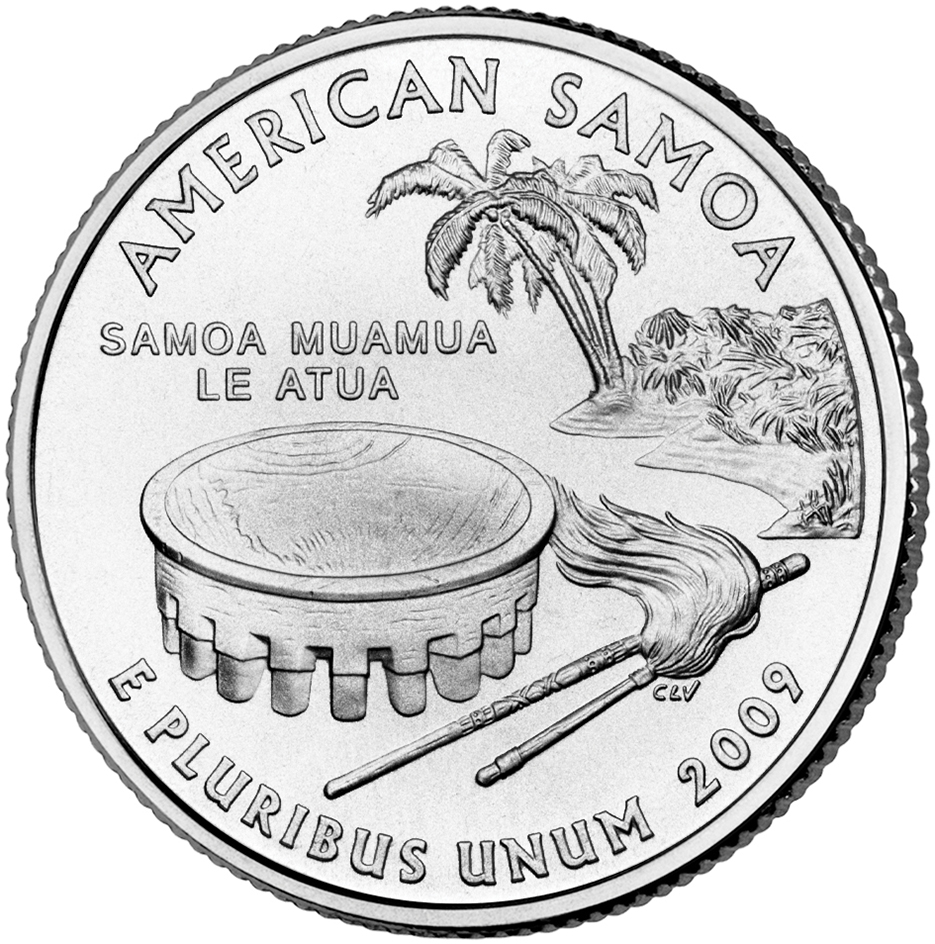
In 1961, the United States began an economic development program in American Samoa. Many people left their villages to take jobs in industries around Pago Pago. Thatch-roofed fale (houses) were replaced by hurricane-proof concrete buildings. New schools were built, and teaching by television was introduced. Children between the ages of 5 and 18 must attend school.
Land.
The islands that make up American Samoa have a total area of 77 square miles (200 square kilometers). Only a third of the land can be cultivated. Rose and Swains islands consist of coral. The others are remains of extinct volcanoes. Most of the land is mountainous, with some fertile soil in the valleys. Coconuts, bananas, and taro are grown (see Taro). There are few natural resources. The islands have a wet tropical climate. Yearly rainfall averages about 125 inches (320 centimeters) in drier areas and 200 inches (510 centimeters) in wetter locations. Temperatures range from 70 to 90 °F (21 to 32 °C).
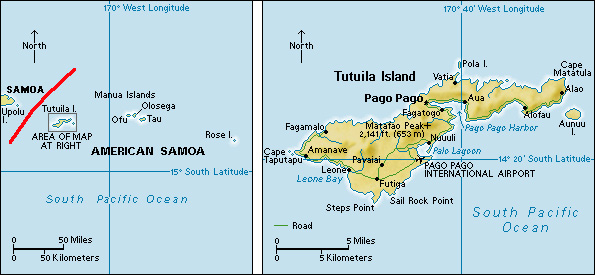
Economy.
The leading industry is tuna canning and canned tuna is the territory’s main export. Leading crops include bananas, coconuts, taro, and yams. Tourism has become an important source of income. The U.S. government has provided large amounts of money to American Samoa’s economy.
History.
The Samoa Islands have been occupied by Polynesian peoples for at least 2,000 years. These peoples probably migrated from eastern Melanesia. European explorers first reached the Samoa Islands in 1722 (see Samoa (History)). In 1872, the Samoans agreed to let the United States use Pago Pago Bay as a naval coaling station. Later, the United States was given trading rights in the islands.
In 1899, the United States, Germany, and the United Kingdom signed a treaty dividing the Samoa Islands between the United States and Germany. Germany took control of the western islands in 1900. The United States took control of Tutuila, Aunuu, and Rose Island in 1900, and the Manua group in 1904. Swains Island was annexed in 1925. The islands were administered by the U.S. Navy until 1951, when they were transferred to the Department of the Interior. Afterward, the governor of American Samoa was appointed by the secretary of the interior. In the early 1970’s, the United States proposed that the territory elect its governor. But Samoan voters rejected the proposal three times. Many believed the change would weaken their ties to the United States. American Samoans approved the proposal in 1976 and first elected a governor in 1977.
